
If I had to guess, and I really can’t imagine why I’d ever have to, I would say New Mexico has two or three times as many dirt roads as paved roads. I’m not getting on those trails at anywhere near the frequency I should be so I called up my moto-buddy Mike and asked him to show me the volcanoes. With the morning temperature hovering around 30 degrees Fahrenheit it didn’t take much convincing to get Mike to ride along in Brumby, the 1992 YJ Jeep.

There is a huge expanse of territory encircled by Highway 380 to the south, Interstate 25 on the western edge, Highway 60 up north and Highway 54 marks the eastern edge. Roughly 50 miles square, this land has hundreds of miles of dirt roads crisscrossing in all directions. These roads lead to huge cattle ranches and as such are kept in pretty decent condition. In dry weather you could run most of them in a two-wheel drive sedan. In wet weather they become much more challenging.
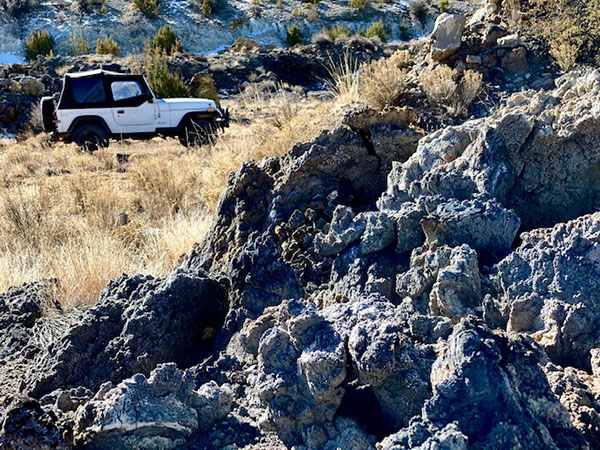
With the Jeep heater on high, we turned north off 380 and headed 25 miles into the outback to find the volcanoes. I didn’t really see a traditional cone-shaped volcano; at the volcanoes it’s more a lava field with an impressive variety of colorful minerals scattered about. Rust reds, crumbling ochers, and black lava dominate. The area is pockmarked with sinkholes several feet deep. What looks like broken beer bottles is actually exposed glass fused between layers of lava. I need to quick-learn geology because this spot is interesting and needs further exploration.
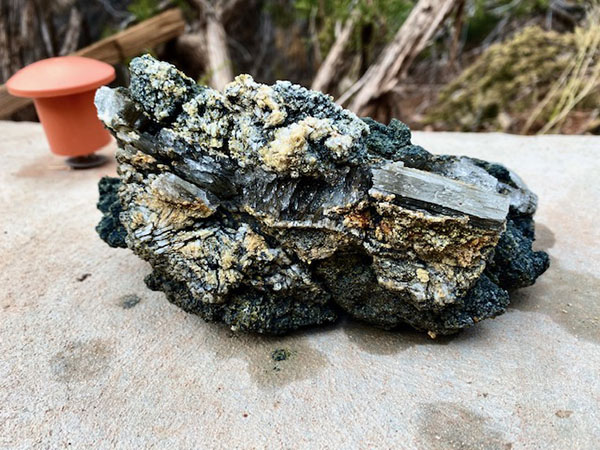
Forty miles from the volcanoes are the Gran Quivira ruins. The Spanish have a long history in the area. If you are a Native American you probably don’t think highly of the Spanish. The ruins of three large churches with pueblos built around them are thirty to forty miles apart. The southernmost one, Gran Quivira dips into our loop and it’s worth taking a trip just to see the masterful stonework.
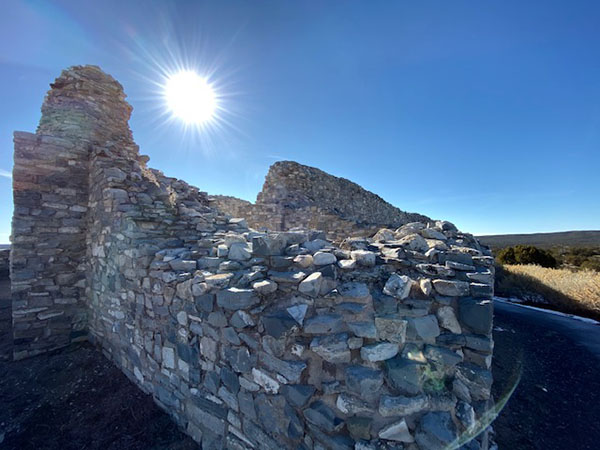
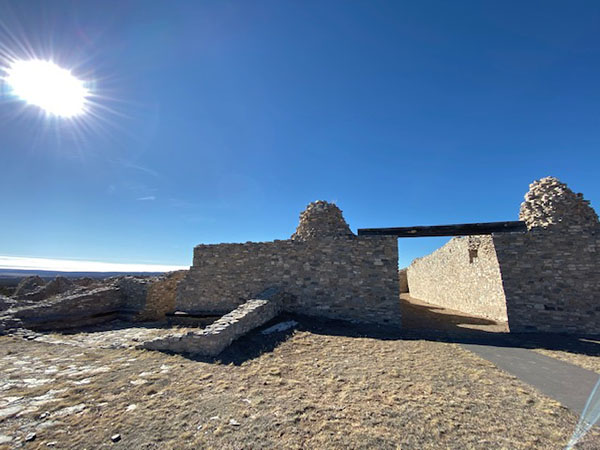
The ranches out here have a loosey-goosey cow containment policy. Since the land is so dry it takes many acres to support one cow. Fencing huge amounts of land is not cheap so you get just a bit of fence near the road and the cows wander around doing cow-like things. It’s best to drive past slowly. If a cow hits your truck at 30 MPH things will get compressed rapidly.

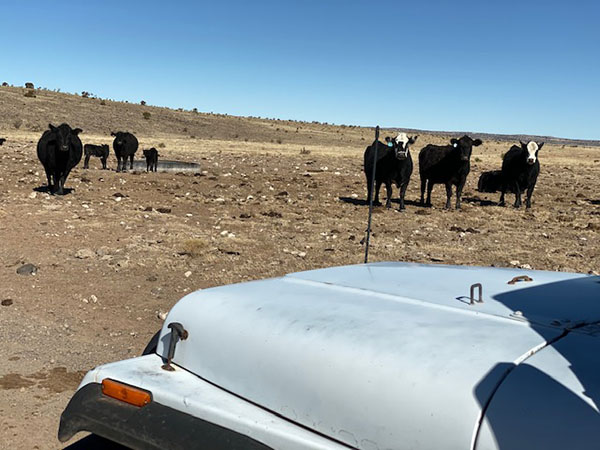
After the ruins we ran for many miles on a slippery mud road that seemed to be the final drainage point for 50,000 acres. I put Brumby in 4WD because the little Jeep wanted to spinout when we sunk into the really muddy bits. Having the front wheels pulling seemed to make the truck go straighter.
In Corona we pulled up to the only good Mexican restaurant in town, also the only restaurant in town. As soon as I managed to unfurl my body and escape the Jeep’s door the neon “Open” sign went dark. I looked inside and the chairs were leg-high on the tables and staff was cleaning up.
I cracked the door and stuck my head inside, “Are you guys really closed?” The Senorita in charge said, “Yes, but it will take us a while to clean up, come in.” Not wanting to create more trouble, Mike had a burger with un-sweet tea and I seconded the order.
After a late lunch we ran the county-maintained dirt roads all the way back to Carrizozo. With the setting sun illuminating Brumby’s bug and mud splattered windshield I nearly overcooked a few turns, but only because I couldn’t see them.
All told we did over a hundred miles of off road exploring and we only scratched the surface of this one tiny section of New Mexico. It will take many lifetimes to see all this state has to offer and next time I’m bringing a metal detector.
Never miss any of our stories by enlisting here:
